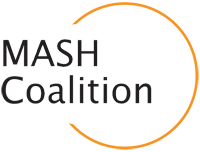MASH
MASH PROGRAM STATUS: Active, But Winding Down
The infusion of funds into the program from AB 271 (described below), was quickly put to use – projects were funded from the waiting lists, new projects signed up, and the wait lists were once again oversubscribed and closed to new applicants. Previously reserved money, however, continues to slowly be returned to the MASH program as some projects cannot move forward to completion or come in smaller than anticipated, so new reservations have been made and the wait lists maintained by each utility have occasionally re-opened. The SCE wait list re-opened (and filled and closed again) in October 2016, the PG&E wait list re-opened in October 2015, and the SDG&E wait list August 2013. This cycle could repeat, as some proportion of the newly reserved projects fail to complete and the slow turnover from recycled funds continues. No new money, however, is expected be added to the program, so the cycles will wind down.
The MASH Coalition’s work focuses on California statewide energy policy, providing a voice for multifamily affordable housing in the policy and regulatory arenas. Central to our work are programs governed by the California Public Utilities Commission (CPUC). Major efforts are summarized below.
View a detailed history of our work.
View a complete list of our CPUC comments.
The Success of MASH
The Multifamily Affordable Solar Housing (MASH) program provides upfront incentives to offset the costs of installing solar photovoltaic (PV) systems on multifamily affordable housing properties in California. The overarching California Solar Initiative included a 10% set-aside to serve low-income households. A number of Coalition members were involved in bringing that mandate to fruition. The result was the MASH program, created in 2007-2008 and initially funded with $108 million. An equal amount was allocated to its single-family sister program, SASH. The program started slowly with just five properties being funded in 2009. But as affordable housing sponsors became familiar with the program, it became highly successful, with the funding being fully subscribed and the waiting list filled to capacity within five years. A key element was the mutual education of housing sponsors and program administrators working to bring together the disparate worlds of energy and affordable housing policy.
The MASH Coalition was born out of housing sponsors’ need to play an active role in that process, including a crucial effort to bolster enforcement of low-income eligibility requirements. Through early 2016, MASH has funded installation of nearly 30 MW of PV on 387 properties, with more projects in progress.
AB 217
In 2013, California passed a bill (AB 217: Bradford) to approve an additional $108 million to support and extend the MASH and SASH efforts. With significant input from the MASH Coalition, in January 2015 the CPUC unanimously approved new rules on how these funds should be spent. Program changes, memorialized in a new stand-alone MASH Program Handbook, include clarification of low-income eligibility requirements and enhanced benefits for solar that directly benefits individual low-income residents’ units.

